Bringing in new customers isn’t about throwing spaghetti at the wall and seeing what sticks. It requires intentional, data-driven decision-making backed by the right tools, timing, and message.
Whether you sell a product or service, growth doesn’t happen accidentally. It occurs through the thoughtful execution of the right customer acquisition strategies that move people from interest to action.
If your brand is built to grow, your customer acquisition approach must evolve with it. You can’t rely on guesswork or outdated tactics. You need a modern, agile strategy that aligns with today’s buyer journey.
This blog will break down nine must-have methods that growing brands must master. But first, let’s clarify the foundations: what customer acquisition means and how it fits into a broader strategy.
What Is Customer Acquisition and Why Does It Matter
Customer acquisition involves attracting and converting new customers through marketing and sales tactics. It isn’t just about making one sale—it’s about building a repeatable system that generates consistent, profitable growth.
The cost of acquiring customers (CAC) must be sustainable, and the process must align with long-term brand goals. When done well, acquisition fuels revenue, builds brand recognition, and lays the foundation for retention and referrals. It’s not optional. It’s the heartbeat of business development.
Understanding the Customer Acquisition Funnel
To acquire customers effectively, you must understand how they make decisions. This is where the customer acquisition funnel becomes a vital tool, guiding your efforts and keeping your strategy aligned with customer psychology.
The funnel includes three main stages:
- Awareness: The prospect comes across your brand or product for the first time, whether through an ad, a blog post, word of mouth, or search engines. This stage is about visibility and positioning.
- Consideration: Now, be aware that the prospect starts comparing your brand against competitors. They read reviews, explore your offerings, and weigh the pros and cons. This is the moment to shine with relevant, helpful content and persuasive messaging.
- Conversion: After thoughtful evaluation, the prospect becomes a paying customer. Your job here is to make that transition seamless with strong calls to action, clear value, and minimal friction.
Every strategy you implement should be mapped to one or more stages. Doing so ensures your efforts stay relevant, timely, and impactful.
Here are the nine customer acquisition strategies every growing brand should master:
1. Refine Your Target Audience With Precision
A broad message reaches no one, and a diluted campaign often falls flat. Effective acquisition starts with a crystal-clear audience definition that zeroes in on the right people. The more specific your focus, the more powerful your messaging becomes.
- Develop detailed buyer personas using data from past in-person interactions, customer feedback, and observed behavior in real-world campaigns.
- Use face-to-face conversations to segment your audience by response patterns, objections, and interest levels.
- Focus on pain points and desired outcomes expressed during live engagements to shape messaging that addresses real needs.
- Train your field team to identify ideal prospects quickly and fine-tune pitches based on audience reactions.
Knowing who you’re targeting helps you communicate value in a way that resonates on a deeper level. It builds trust, relevance, and stronger emotional engagement. Ultimately, clear targeting drives more qualified leads into your funnel.
2. Build High-Impact Lead Magnets
Lead magnets in direct marketing happen in real time. They create an immediate reason for someone to stop, listen, and share their contact information or interest. They’re the gateway to a more extended conversation.
- To spark curiosity and draw crowds, offer limited-time promotions or giveaways at booths, pop-up stands, or on-the-ground campaigns.
- Provide free product samples or branded merchandise in exchange for a name, phone number, or email.
- Ask targeted questions that lead into value-based offers during face-to-face interactions.
- Train your team to deliver these offers with energy, clarity, and timing that connects emotionally.
The right magnet turns curiosity into a qualified lead with genuine interest. It encourages further exploration and signals that your brand understands their needs. With every in-person opt-in, you gain more than contact info—you begin earning trust.
3. Optimize Your Physical Presence for Conversion
In direct marketing, your conversion tool isn’t a website—it’s your brand ambassadors and setups. Your table, booth, signage, and face-to-face script must convert attention into interest and action.
- Use bold signage, engaging visuals, and well-placed materials that make your value proposition obvious.
- Create clear walk-up paths and minimize confusion or barriers to engage.
- Train team members to deliver concise, compelling pitches that lead directly to the desired action.
- Use social proof like printed testimonials or real-time stories to increase credibility.
A conversion-optimized presence moves prospects from “just looking” to “ready to act.” It reinforces professionalism, energy, and confidence. Every interaction counts—make yours count more.
4. Leverage Paid Outreach to Boost Face-to-Face Opportunities
Paid outreach in direct marketing fuels your physical efforts by placing your team in high-traffic areas and events where your audience gathers. It’s not about online clicks—it’s about buying real estate and moments.
- Invest in foot traffic-rich spaces like malls, festivals, expos, or university campuses.
- Collaborate with property managers or event organizers for high-visibility booth placement.
- Pay for branded apparel, printed flyers, and display materials that attract attention.
- Support outreach with geo-targeted door hangers or local print materials that set the stage.
The more intentional your paid exposure, the more results your direct efforts will yield. It’s about boosting in-person presence, which is where it matters most. That’s how you stretch budget and amplify results.
5. Master Local Area Canvassing
Local canvassing is one of the oldest and most effective forms of customer acquisition in direct marketing. It’s about meeting your audience where they live, work, and play.
- Walk targeted neighborhoods with branded uniforms and materials tailored to the demographic.
- Engage residents with friendly, helpful conversation—not scripts—and ask permission to share value.
- Track canvassing performance by neighborhood to identify high-converting areas and replicate success.
- Use door-to-door visits to collect insights about objections, timing, and community needs.
Done well, canvassing builds familiarity and creates hyper-personalized outreach. It leads to memorable impressions and stronger conversions. And it shows customers you care enough to show up.
6. Build Follow-Up Systems That Feel Personal
In direct marketing, follow-up should feel like a natural extension of the conversation. It’s how you move someone from warm interest to confirmed action.
- Use handwritten notes, personalized text messages, or quick follow-up calls to remind them of your conversation.
- Time your follow-up based on the urgency or emotional triggers uncovered during the interaction.
- Use names, local references, and specific offer details to make your message authentic and relevant.
- Encourage your team to treat follow-up like relationship-building, not just selling.
People respond to those who remember them. A good follow-up builds continuity, not pressure. That’s what creates loyalty before the sale even happens.
7. Form Local Partnerships and Community Ties
Strategic partnerships in direct marketing work best at the community level. They open doors and provide warm credibility.
- Partner with local businesses for joint promotions or co-hosted events in shared spaces.
- Join community organizations or sponsor local causes that align with your brand values.
- Offer giveaways or product bundles to other businesses’ customers as a cross-promotion.
- Show up at community fairs, fundraisers, or school events with a clear offer and engaging team.
Partnerships make you a familiar face. They connect your brand to people’s lives, not just their wallets. That’s how you build long-term acquisition momentum.
8. Use Testimonies and Visual Proof on the Spot
Trust is built faster face-to-face, but it still needs reinforcement. Social proof turns interest into belief.
- Display printed testimonials or short storyboards that highlight success stories from other customers.
- Encourage satisfied customers to stop by and share their stories publicly during active campaigns.
- Use photos, before-and-after visuals, or live demos to validate your claims in real time.
- Train your team to use testimonials as stories, not just soundbites.
When prospects see results with their own eyes or hear them from peers, conversion rates increase dramatically. Visual and spoken proof makes the offer feel more real, and that’s the emotional fuel that moves people to say yes.
9. Track Results and Refine In-Person Strategy
Direct marketing can be nimble, but it still needs data. You need a feedback loop to learn, adjust, and grow.
- Track locations, team performance, closing ratios, and time-of-day impact.
- Collect verbal feedback and note objections that come up repeatedly.
- Test different scripts, hooks, or lead magnets and compare conversion rates.
- Use field debriefs and team reflections to improve performance week by week.
Direct marketing results are often immediate—use that to your advantage. Smart teams grow through constant iteration. That’s how customer acquisition becomes a system, not a gamble.
Start Growing Smarter with Delagroup Management
Scaling your brand requires more than effort—innovative, actionable strategies that guide prospects from awareness to purchase. These customer acquisition strategies offer a roadmap to do just that, helping you attract better leads, convert more customers, and grow with confidence. These methods can supercharge your impact when integrated into a thoughtful customer acquisition funnel.
Growth is a moving target. Your acquisition strategy needs a partner like Delagroup Management, an industry leader in customer acquisition strategy and brand development. We specialize in helping businesses attract the right audience, optimize conversion funnels, and build long-term customer relationships that transform growth potential into real results.
Let us help you build your next wave of customers. Contact us today.


